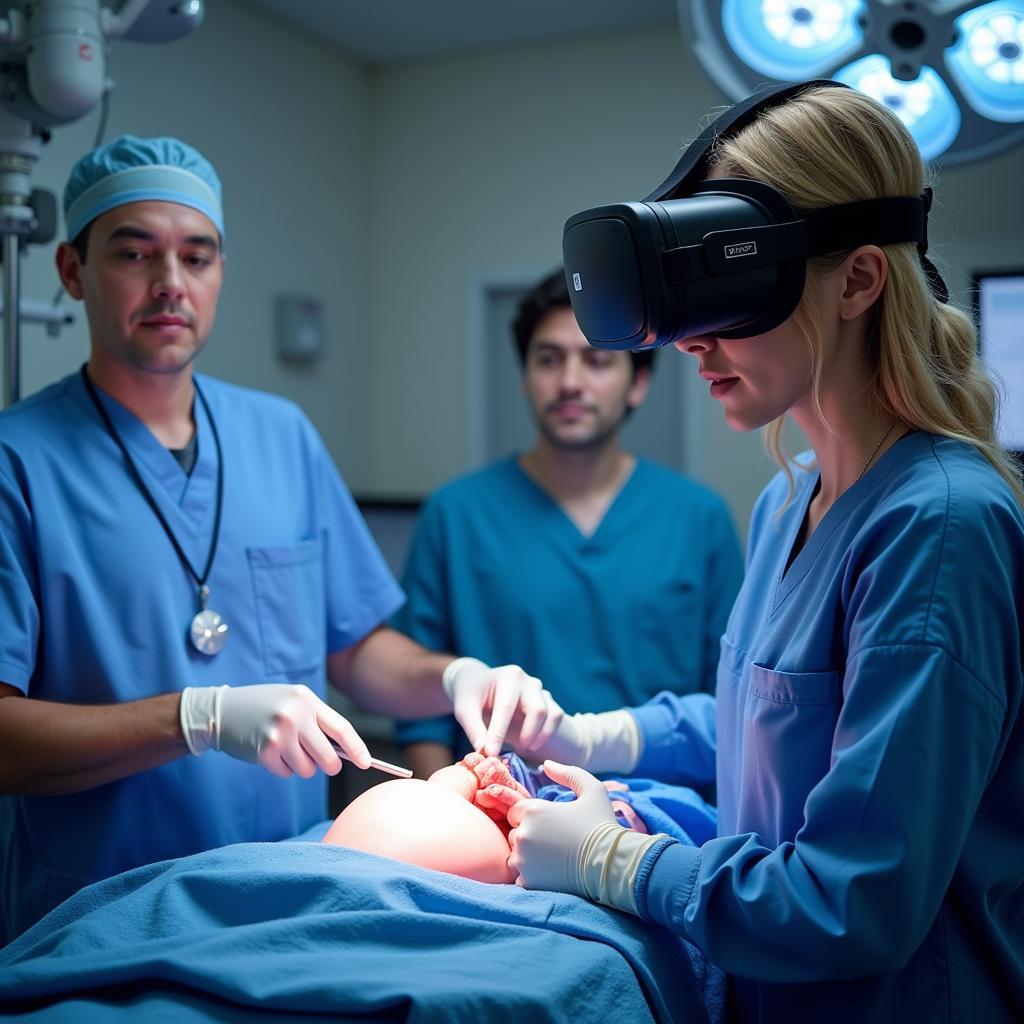Simulation technology is revolutionizing cardiac care education, offering a safe and controlled environment for healthcare professionals to hone their skills and enhance their clinical decision-making abilities. It bridges the gap between theoretical knowledge and practical application, fostering confidence and competence in managing complex cardiac scenarios.
The Benefits of Simulation in Cardiac Care Training
Simulation training provides a multitude of benefits for cardiac care professionals. It allows them to practice rarely encountered, high-stakes procedures without risking patient safety. This hands-on experience significantly improves their ability to respond effectively in real-life emergencies. Furthermore, simulation fosters teamwork and communication, crucial elements for successful cardiac care.
Enhancing Clinical Skills with Simulated Scenarios
Simulated scenarios can be tailored to replicate a wide range of cardiac events, from routine procedures like ECG interpretation to complex interventions such as managing cardiac arrest. This allows healthcare professionals to practice specific skills and develop proficiency in various techniques. The controlled environment of simulation also enables immediate feedback and debriefing, fostering rapid skill acquisition and improvement.
Building Confidence and Competence through Repeated Practice
Repetitive practice is key to mastering any skill, and simulation provides the ideal platform for this. By repeatedly performing procedures in a simulated environment, healthcare professionals can build confidence and competence, reducing anxiety and improving their performance in real-life situations. This is especially valuable for trainees and experienced professionals alike, as it allows them to refine their skills and adapt to new technologies and procedures.
Types of Simulation Technology Used in Cardiac Care
Various simulation modalities are utilized in cardiac care education, ranging from basic task trainers to advanced full-body simulators. Each modality offers unique advantages and caters to different learning objectives.
Low-Fidelity Simulators: Foundational Learning Tools
Low-fidelity simulators, such as task trainers and static manikins, are cost-effective tools for teaching basic skills. They are particularly useful for practicing fundamental procedures like venipuncture, intravenous cannulation, and ECG interpretation.
High-Fidelity Simulators: Mimicking Real-Life Experiences
High-fidelity simulators are sophisticated manikins that can mimic a wide range of physiological responses, including breathing, heart sounds, and blood pressure changes. These simulators create highly realistic scenarios, allowing healthcare professionals to experience the complexities of managing real patients.
 High-Fidelity Cardiac Manikin Simulation
High-Fidelity Cardiac Manikin Simulation
Virtual Reality and Augmented Reality: Immersive Learning Environments
Virtual reality (VR) and augmented reality (AR) are emerging technologies that offer immersive and interactive learning experiences. VR allows users to enter a virtual world where they can interact with virtual patients and perform procedures. AR overlays digital information onto the real world, enhancing the learning experience by providing real-time guidance and feedback.
The Future of Simulation in Cardiac Care
Simulation technology continues to evolve, promising even more realistic and effective training experiences. The integration of artificial intelligence (AI) and machine learning will enable simulators to adapt to individual learners’ needs, providing personalized feedback and tailored training programs.
“Simulation isn’t just about practicing procedures; it’s about developing critical thinking and decision-making skills,” says Dr. Emily Carter, a leading cardiologist at the University of Chicago Medical Center. “It’s about preparing healthcare professionals to handle the unexpected and provide the best possible care for their patients.”
“The ability to practice in a safe environment without the pressure of real-life consequences is invaluable,” adds Dr. David Miller, a seasoned cardiac surgeon. “Simulation allows us to learn from our mistakes and improve our performance, ultimately leading to better patient outcomes.”
 Virtual Reality Cardiac Surgery Simulation
Virtual Reality Cardiac Surgery Simulation
Conclusion
Simulation technology has become an indispensable tool for education in cardiac care. It provides a safe and effective way for healthcare professionals to enhance their skills, build confidence, and improve patient outcomes. By embracing simulation training, cardiac care providers can ensure they are equipped to handle the challenges of this demanding field.
FAQ
- What are the different types of simulation used in cardiac care?
- How does simulation training improve patient safety?
- What are the benefits of using high-fidelity simulators?
- How can virtual reality be used in cardiac care education?
- What is the future of simulation technology in healthcare?
- How much does cardiac care simulation training cost?
- Where can I find cardiac care simulation training programs?
Need help with Car Diagnostic? Contact us via WhatsApp: +1(641)206-8880, Email: [email protected] or visit us at 910 Cedar Lane, Chicago, IL 60605, USA. We have a 24/7 customer support team ready to assist you.

Leave a Reply